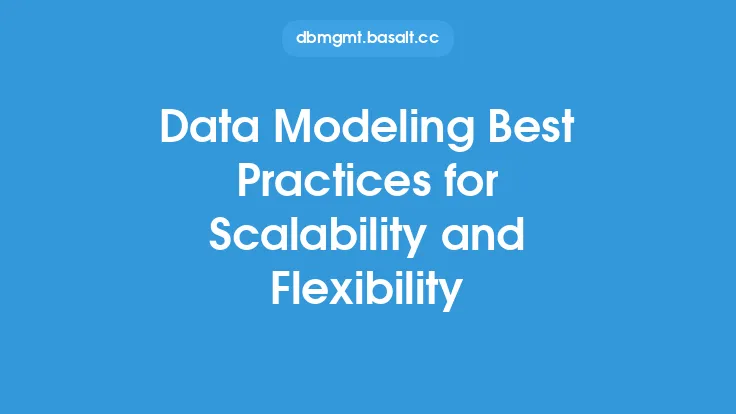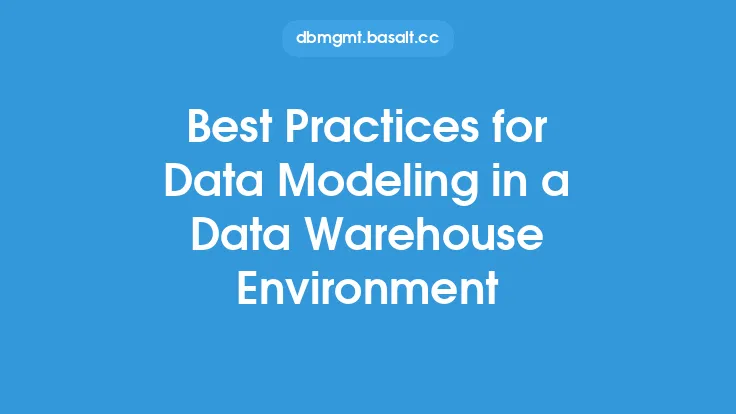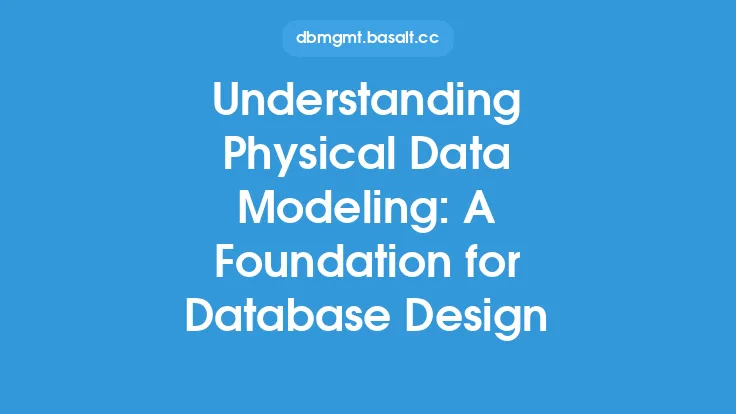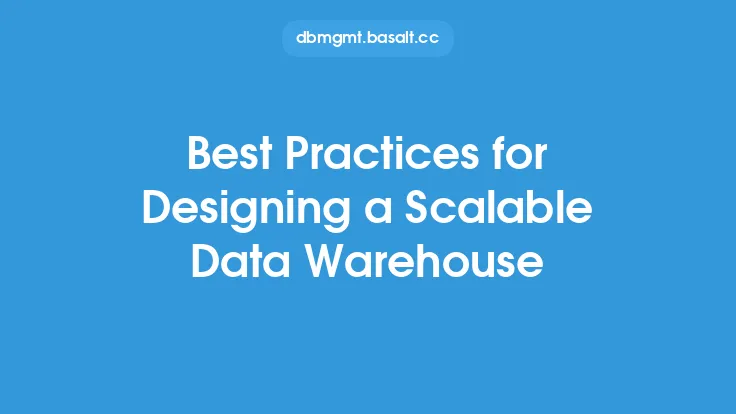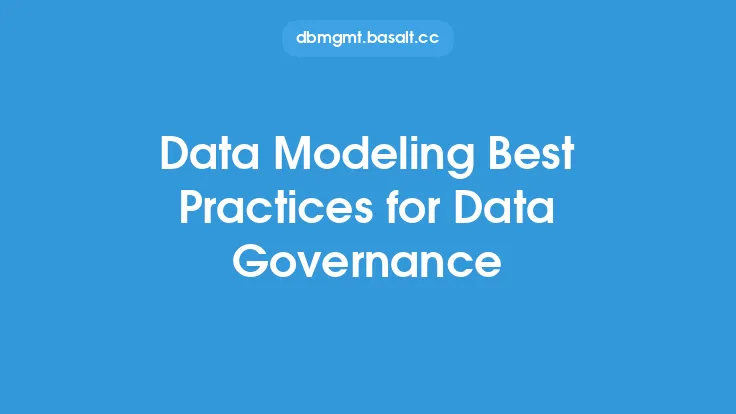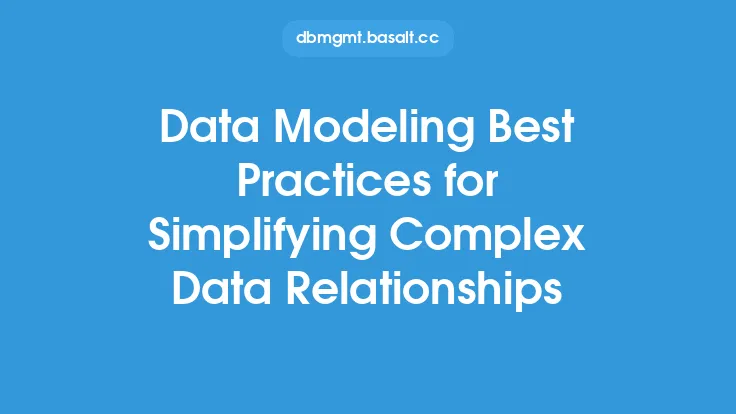When it comes to building a robust and efficient database, selecting the right database management system and designing a well-structured data model are crucial steps. A good database foundation is essential for ensuring data integrity, scalability, and performance. In this article, we will delve into the best practices for database selection and data modeling, providing you with a comprehensive guide to building a solid foundation for your database.
Understanding Database Selection
Database selection is a critical process that involves choosing the right database management system (DBMS) for your specific needs. With so many options available, it can be overwhelming to decide which one is best for your application. To make an informed decision, you need to consider several factors, including data structure, scalability, performance, and security. Different databases are designed to handle different types of data and workloads, so it's essential to understand the strengths and weaknesses of each option. For example, relational databases like MySQL and PostgreSQL are well-suited for transactional data, while NoSQL databases like MongoDB and Cassandra are better suited for handling large amounts of unstructured or semi-structured data.
Data Modeling Fundamentals
Data modeling is the process of creating a conceptual representation of your data, including the relationships between different entities. A well-designed data model is essential for ensuring data consistency, reducing data redundancy, and improving data integrity. There are several data modeling techniques, including entity-relationship modeling, object-relational modeling, and dimensional modeling. Entity-relationship modeling is a popular technique that involves identifying entities, attributes, and relationships between them. This technique helps to create a clear and concise data model that can be used to design a database schema.
Database Schema Design
A database schema is the physical representation of your data model, including the tables, indexes, and relationships between them. A well-designed database schema is essential for ensuring data integrity, improving query performance, and reducing data redundancy. When designing a database schema, it's essential to consider several factors, including data normalization, indexing, and constraints. Data normalization involves organizing data into tables to minimize data redundancy and improve data integrity. Indexing involves creating indexes on columns to improve query performance, while constraints involve defining rules to ensure data consistency.
Normalization and Denormalization
Normalization is the process of organizing data into tables to minimize data redundancy and improve data integrity. There are several normalization techniques, including first normal form (1NF), second normal form (2NF), and third normal form (3NF). Each normalization technique involves applying a set of rules to ensure that data is organized in a consistent and efficient manner. Denormalization, on the other hand, involves intentionally violating normalization rules to improve query performance. Denormalization is often used in data warehousing and business intelligence applications where query performance is critical.
Data Types and Storage
When designing a database schema, it's essential to choose the right data types and storage options for your data. Different data types, such as integers, strings, and dates, have different storage requirements and performance characteristics. Choosing the right data type can help improve query performance, reduce storage requirements, and ensure data integrity. Additionally, storage options, such as disk storage and solid-state storage, can have a significant impact on query performance and data availability.
Query Optimization and Performance
Query optimization is the process of improving query performance by reducing the amount of data that needs to be retrieved and processed. There are several query optimization techniques, including indexing, caching, and query rewriting. Indexing involves creating indexes on columns to improve query performance, while caching involves storing frequently accessed data in memory to reduce disk I/O. Query rewriting involves rewriting queries to reduce the amount of data that needs to be retrieved and processed.
Data Security and Integrity
Data security and integrity are critical aspects of database design and implementation. Data security involves protecting data from unauthorized access, while data integrity involves ensuring that data is accurate, complete, and consistent. There are several data security and integrity techniques, including encryption, access control, and data validation. Encryption involves encrypting data to protect it from unauthorized access, while access control involves defining rules to control access to data. Data validation involves checking data for accuracy and consistency to ensure data integrity.
Best Practices for Database Selection and Data Modeling
To build a robust and efficient database, it's essential to follow best practices for database selection and data modeling. Some best practices include:
- Choosing the right database management system for your specific needs
- Designing a well-structured data model that meets your business requirements
- Normalizing data to minimize data redundancy and improve data integrity
- Denormalizing data to improve query performance when necessary
- Choosing the right data types and storage options for your data
- Optimizing queries to improve performance and reduce storage requirements
- Implementing data security and integrity techniques to protect data from unauthorized access and ensure data accuracy and consistency.
By following these best practices and considering the factors mentioned in this article, you can build a robust and efficient database that meets your business requirements and ensures data integrity, scalability, and performance. Remember, a good database foundation is essential for ensuring the success of your application, so take the time to get it right.
